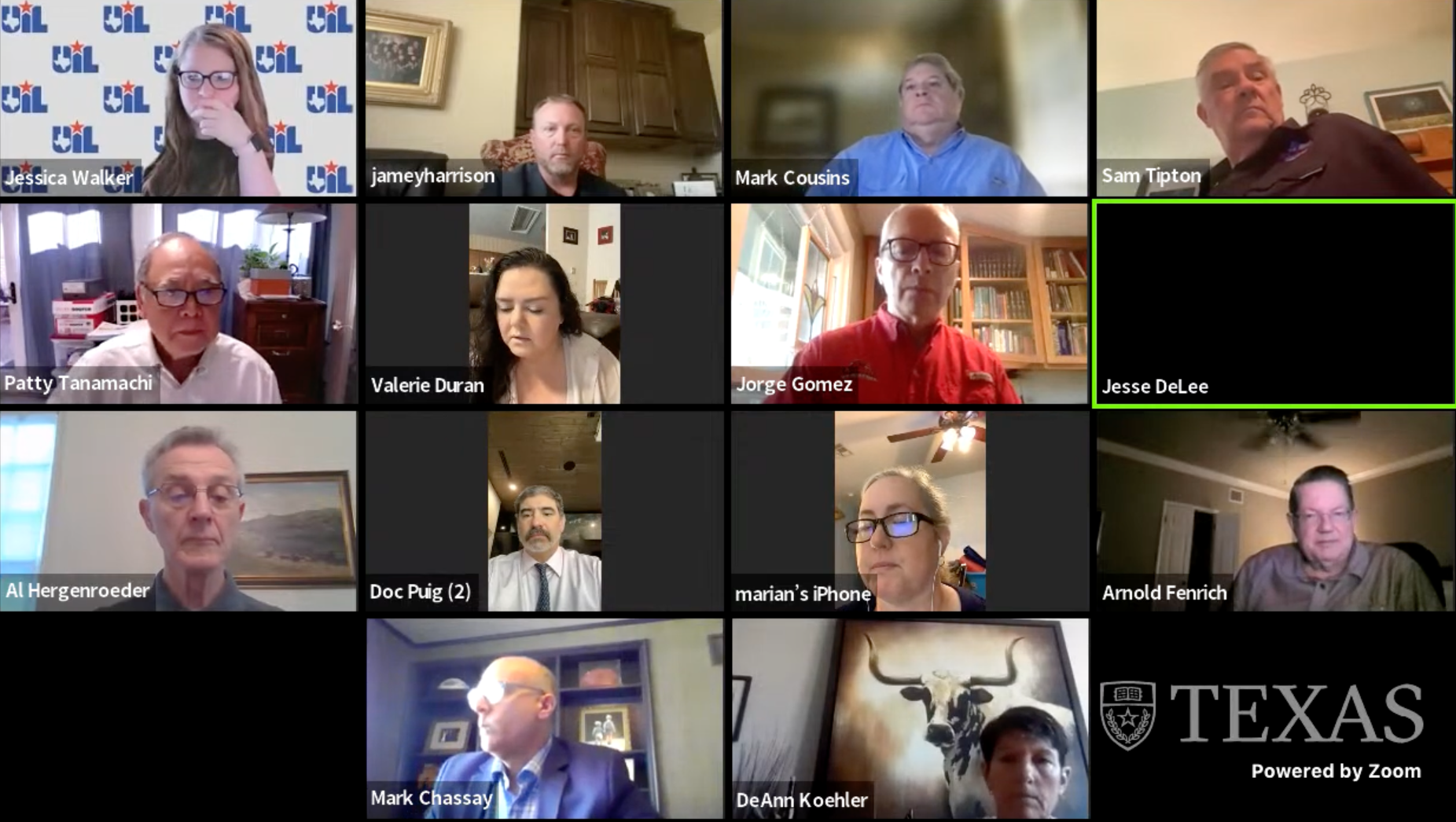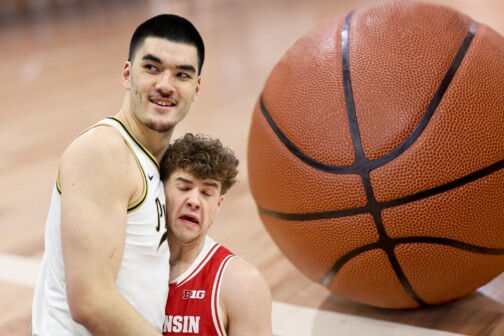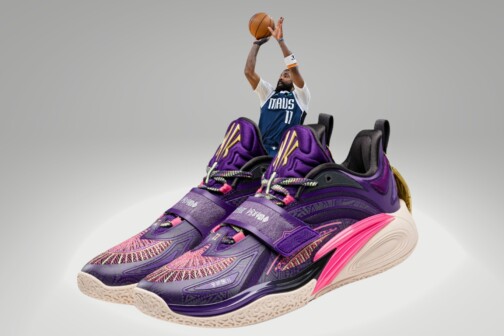In January, as many as 20 football players at Rockwall-Heath High School were hospitalized with a condition called rhabdomyolysis following a strenuous workout led by then-head football coach John Harrell. Harrell resigned in March, and former Highland Park ISD Athletic Director Rodney Webb was hired to replace him as Heath looks to move forward. Now the agency that governs sports and academic competitions in Texas will do the same by requiring coaches and trainers to learn more about that stress condition to help avoid future hospitalizations or illnesses.
The University Interscholastic League’s medical advisory committee met Sunday to discuss upgrading its training and resources to not only include rhabdomyolysis, which medical professionals shorten to rhabdo, but also ways of adjusting workouts to account for weather conditions like heat. While the protocol is wider-ranging, there was little doubt that the incident at Rockwall-Heath played a part in the committee’s desire to make sure athletic staffers, parents, and students understood more about the condition.
Mark Cousins, UIL eligibility and education director, told the committee that Dr. Steven Horwitz, a Rockwall trainer and chiropractor, had requested that the body consider require rhabdo training.
“It came out of Rockwall-Heath, about some kids that came down with rhabdo after a particularly strenuous workout, and he asked whether or not rhabdomyolysis was part of our current safety training program,” Cousins said.
Symptoms of severe rhabdo usually emerge about 24 to 48 hours after overexertion and can result in more extreme muscle breakdown that overtaxes the kidneys. If left untreated, rhabdomyolysis can result in cardiac issues, kidney failure, and even death.
According to Cousins, most of the materials covered in the UIL’s current training was mandated by state law “a number of years ago.” Horwitz had also provided the committee with resources and information.
The medical advisory committee had already begun the process of amending and updating its training on heat safety, Cousins said, in the hopes of rolling out the program in June. He said that creating additional materials prior to the rollout could also be beneficial as training sessions ramp up.

“I certainly think it’s warranted in our neck of the woods,” said committee member John Puig, a Laredo-based family medicine physician. “We’ve had several young high school students that have been hospitalized for rhabdo over the last several years, and with the lack of information that’s available to parents and coaching staff, I think that safety training would be a welcome addition.”
Joe Martin, who leads the Texas High School Coaches Association, said that his organization is planning two separate lectures on rhabdo over the summer. Texas Girls Coaches Association head Sam Tipton said his group would offer similar training in Arlington this summer, too.
The group briefly considered the idea of including language about “punitive” workouts that are doled out by coaches when players commit some kind of infraction. That was reportedly the catalyst of the Rockwall-Heath incident, in which players were made to do almost 400 pushups as a consequence for mistakes made earlier in the workout.
“That’s not based on subjective information, right? So the coaches decide a workout wasn’t great, so we’re gonna have kind of post-workout consequences,” said North Crowley High School athletic trainer Valerie Duran. “I think coaches should be allowed to have autonomy over their practices, but it’s subjective versus objective, so as opposed to having consequences for, let’s say, something objective like missed serves or free throws … Everything we have seen has been subjective on the coach. It’s based on frustration. It’s based on anger.”
Other committee members were wary of adding such language, worried that it would overshadow the other causes of rhabdo like dehydration, temperature, and even the sickle cell trait. They worry it might cause coaches to incorrectly gauge their workouts.
“A lot of times, that’s not what we’re seeing,” said Marian Hendricks, a Corpus Christi family physician. “It’s excessive workouts in terms of intensity or heat, and often after a delay, like they’ve had a period of rest or they’ve been traveling. What you’re saying might be a part of it, but I don’t think the literature is going to bear that out as the main factor in these cases.”
Instead, they believe educating coaches and trainers on how to avoid and spot the condition, along with more guidelines on heat exertion in general, would do much more to prevent more rhabdo cases.
“One of the things that we do at the University of Texas is we’ve instituted what’s called ‘return to play’, and we’ve addressed this because it is a problem in the NCAA,” said DeAnn Koehler, a trainer with UT’s women’s volleyball and women’s golf programs. “The athletic trainer reviews all workouts after any extended period of time where the athletes leave and then come back. It’s education, and then it’s just doing a review to make sure that the workouts that are planned are appropriate for and have graduated increases to activity.”
San Antonio orthopedic surgeon Cary Tanamachi agreed that better oversight and training on recognizing the impact a strenuous workout can have is the most important aspect of the training—something he said thought might have come too late in Rockwall.
“I would think recognition of the problem would be very important,” he said. “The school board in Rockwall didn’t recognize the fact that this was a major problem with the kids being overtrained, so it took a while for that diagnosis to come through.”
One of the ways to avoid sickness from heat exertion and rhabdo may be a change in how heat is measured. Instead of the old stand-by, the heat index, trainers and coaches are finding that they can cancel fewer workouts but still keep athletes safe by instead using something called a wet-bulb globe temperature. That measurement looks at temperatures in a variety of conditions, including sun angle, humidity, and temperature. The name comes from the wet bulb used to mimic how long it takes for sweat, which cools the human body, to evaporate. Duran said that after her school switched to the new method, it has yet to need to cancel a practice, even on hot days.
“It was way better than the heat index—it had a cut off that was way conservative and my junior highs would never go out,” she said. “Wet-bulb allows you to go out for a certain amount of time, based on the numbers. You might have modifications, like more water breaks or no equipment, but we have zero restrictions.”
Accordingly, the committee has recommended, but not required, schools make the switch. The UIL’s training this summer will also include information on how to obtain and understand wet-bulb globe temperature readings, as well as how heat, exertion, and other issues can factor into whether an athlete develops rhabdo. Resources for parents and coaches will also be available on the UIL website, and in materials parents receive when they sign their child up for a sport. Additionally, some vendors provide apps that allow athletic directors or administrators to send text alerts about practice conditions for the day to coaches from a central system.
All of this could work alongside Senate Bill 979, filed by state Sen. Donna Campbell, R-New Braunfels, which would require safety training to include rhabdomyolysis information, as well as safety drills that simulate injuries like rhabdo, concussions, and heat stroke. The hope is better education and increased attention toward the problem will prevent an incident like Rockwall-Heath from happening again.
“This is preventable, and I think that it’s preventable in a low-resource kind of way,” said Al Hergenroeder, a sports medicine doctor from Houston. “This can be done in the Third Ward in Houston as well as it can be done in the wealthiest counties in the state.”
Get the ItList Newsletter
Author






